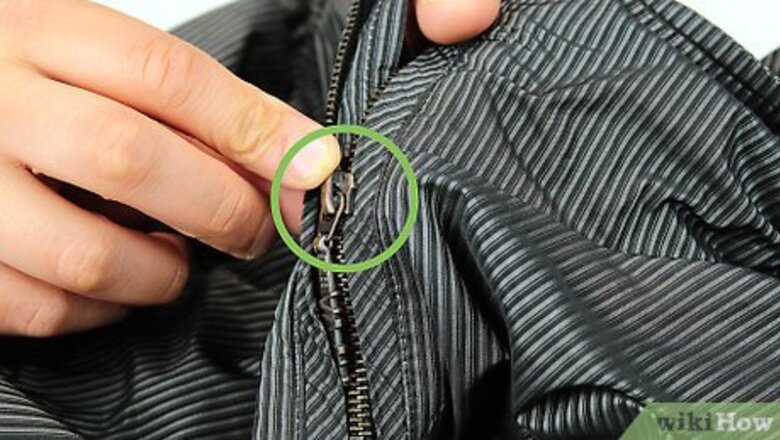
views
Freeing Obstructions in the Fabric
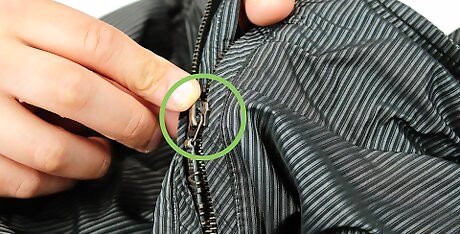
Look for fabric stuck in the zipper. Sometimes, zippers may stop working because a bit of the surrounding fabric gets caught in the teeth. Inspect the garment or accessory closely for snags, folds, tangles and other signs of a hangup. These tend to be fairly easy to correct. Snags are usually to blame when a zipper completely refuses to budge. If there are no visible obstructions in the zipper teeth, you may need to try lubricating the teeth instead.
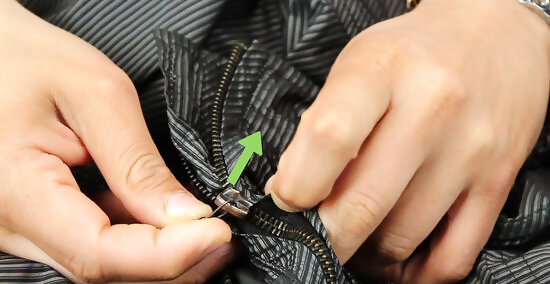
Pull the fabric away from the zipper. Once you’ve located the snag responsible for blocking the zipper, take hold of the fabric around the obstruction and give it a gentle tug. If the snag is especially small, using a pair of tweezers may help you get a better grip. Pull the fabric in the direction opposite the way the zipper runs and hold it. You can also try dislodging the fabric from inside the teeth with the point of a safety pin. Be careful not to wrench on the fabric too hard, or you may tear it.
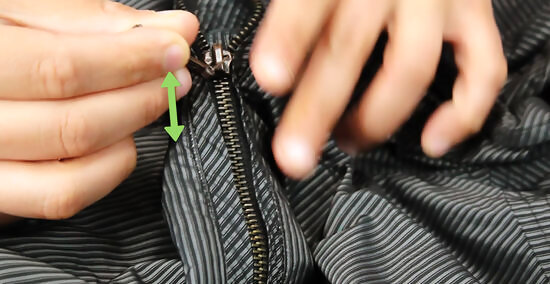
Work the zipper up and down. Keeping your hold on the snagged fabric, begin gently pulling the zipper tab. Try sliding it in both directions to see if the fabric releases. In most cases, constant tension, small movements and a little patience will be enough to clear the zipper teeth. If you don’t have any luck freeing the fabric from the zipper, your only option will be to take it to a tailor.
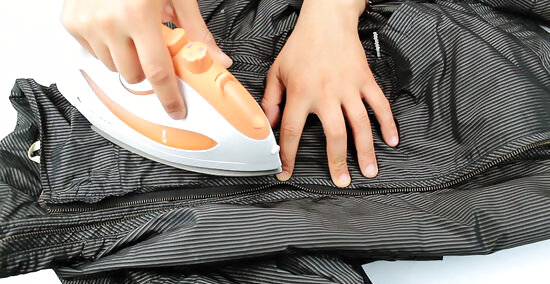
Prevent further obstructions. After successfully dealing with a troublesome zipper, take a few precautionary steps to make sure the problem doesn’t happen again. Stitch up ragged holes, smooth out wrinkles and use a razor to cut away loose threads. When you’re done, iron the fabric on both sides of the zipper to make sure it lays flat. The less fabric there is in the way of the teeth, the less likely another snag is to occur. Keep an eye out for frayed edges around the zipper tape itself.
Rubbing the Zipper with a Pencil

Find a pencil. Check your desk, backpack, briefcase or junk drawer for a graphite pencil. For best results, you’ll want to use a traditional wooden pencil rather than one of the mechanical variety—the broader tip will make it easier to get the graphite onto the zipper. Graphite naturally makes a very effective dry lubricant.
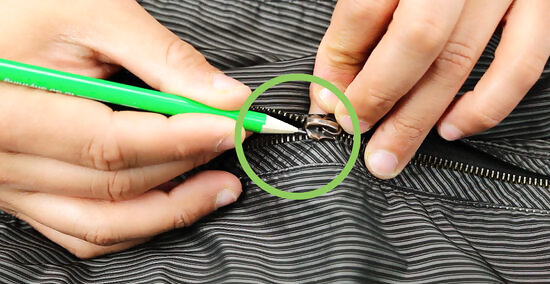
Rub the tip of the pencil along both sides of the zipper teeth. Hold the zipper together with one hand while you work. Continue rubbing until you can see the graphite being left behind on the teeth. Focus on the line where the teeth intersect, as this is where most zippers get jammed. Only apply a light amount of pressure to avoid breaking the tip of the pencil. The loose graphite particles will coat the edges of the teeth, making it easier for them to lock and unlock.
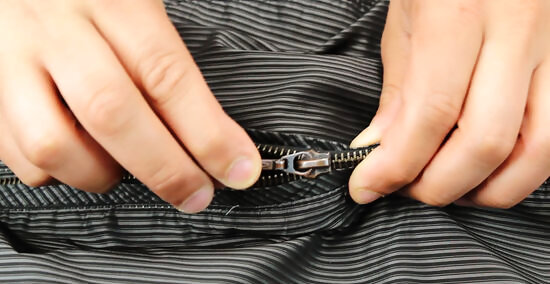
Try sliding the zipper. Test the zipper a few times by pulling it with slow, smooth motions. It should be able to glide freely once you get it started. When you’re finished, wash your hands and wipe off any remaining graphite with a paper towel to keep it from getting all over the surrounding fabric. Don’t attempt to force the zipper. This may result in damage to the fabric or the zipper itself.
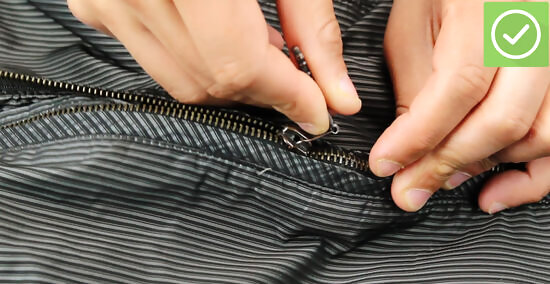
Repeat until the zipper budges. If the pencil trick doesn’t work right away, keep trying. There may not be enough graphite on the teeth to get the zipper moving after a single attempt. Alternate between rubbing the pencil and sliding the zipper back and forth until you see progress. If you’re still encountering resistance after applying a second coating of graphite, move on to a different method.
Using an Improvised Lubricant
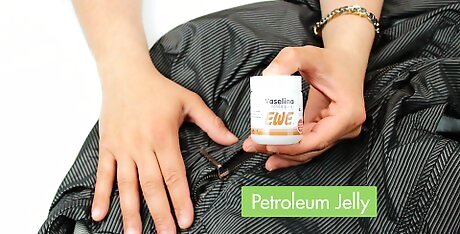
Grab a makeshift lubricant. Search your home for something you can use to reduce the friction between the slide and teeth of the zipper. This could be a bar of soap, a tube of chapstick or even a bottle of Windex—almost any type of smooth, slick substance will do the trick. Some other options include wax candles, petroleum jelly, crayons and lip balm. Since so many different improvised lubricants can be effective, you should have a solution close at hand whether you’re at home, work or on the road.
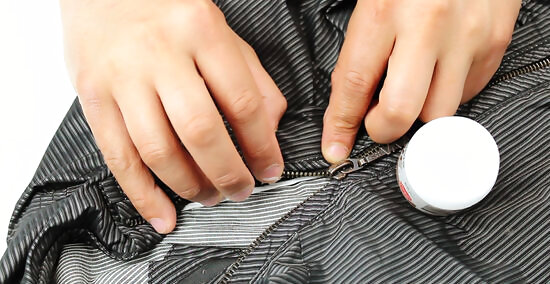
Apply the lubricant directly to the zipper teeth. Start with the section of teeth that are still connected and use a generous amount of lubricant. Gradually try easing the slide up and down after a few minutes. As the lubricant seeps deeper into the teeth, you should find it easier to get the zipper moving. Do your best to keep the lubricant away from the fabric itself in order to prevent staining and discoloration. Use a separate tool, such as a cotton swab, to smear on messier substances like Vaseline or olive oil. If you’re using Windex, spray it over the entire zipper area, then wait a few minutes before testing the zipper.
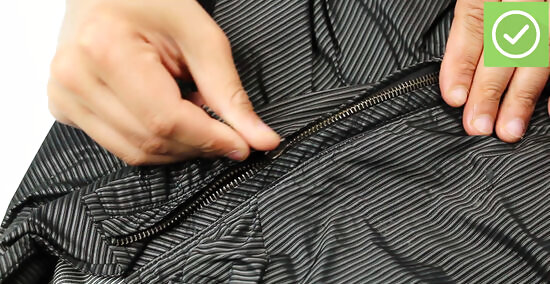
Give the zipper a try. Take hold of the zipper tab and pull on it lightly to see if it moves. Chances are, the lubricant will have worked and your zipper will now be as good as new. Otherwise, you may need to use a second application to get it zipping and unzipping consistently. Lubricants help clear the teeth of built-up dust and dirt, which is the leading cause of stuck zippers on older items. If the zipper is still uncooperative at this point, take it to an alterations shop to have it repaired or replaced.
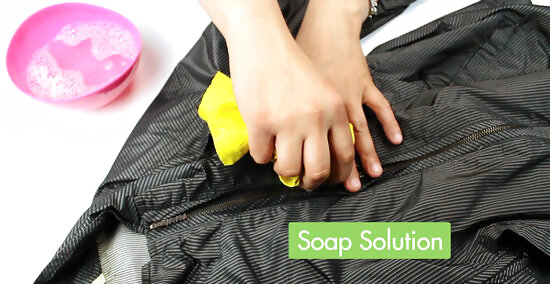
Clean the garment or accessory. If the item is washing machine-safe, throw it in with your next load of laundry. Otherwise, you can scrub the zipper and the area around it with a cloth dampened with a mild soap solution. This is a good habit to get into when it comes to keeping your zippers functional, as well. Not only will a good cleaning remove lubricant residue from the item, it will also clean any remaining debris out of the zipper, renewing it and improving its performance for many more wears.


















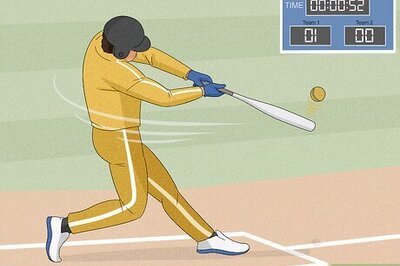

Comments
0 comment